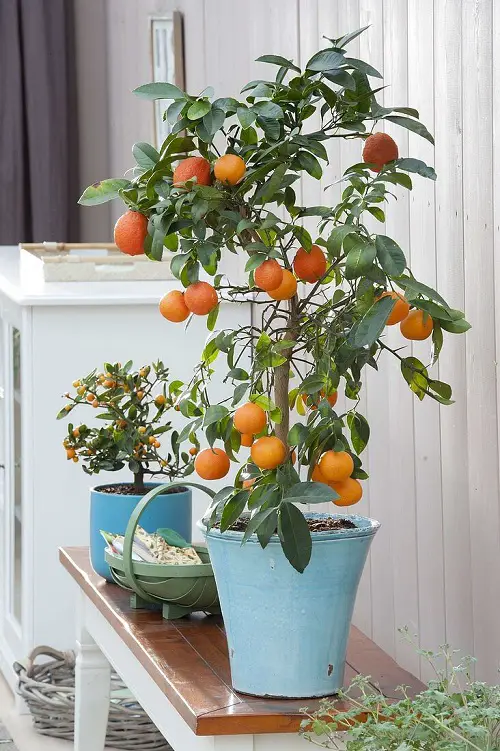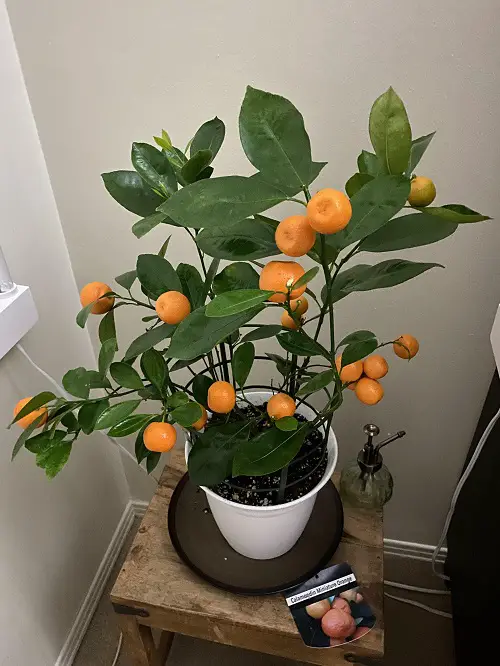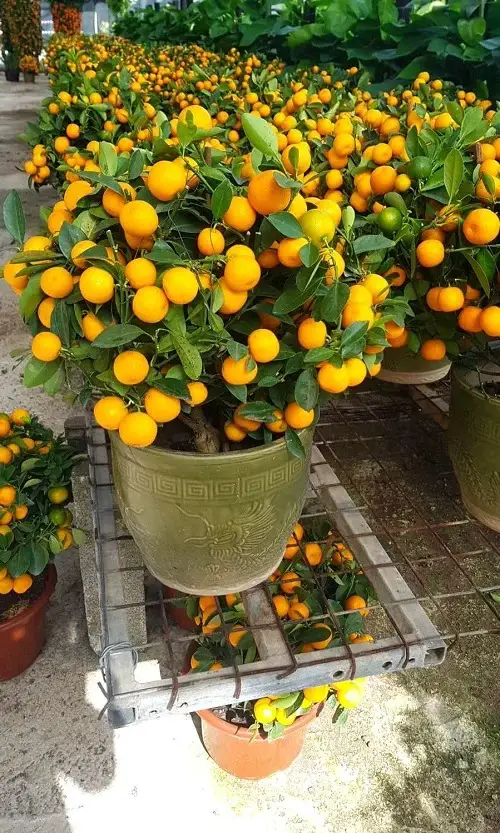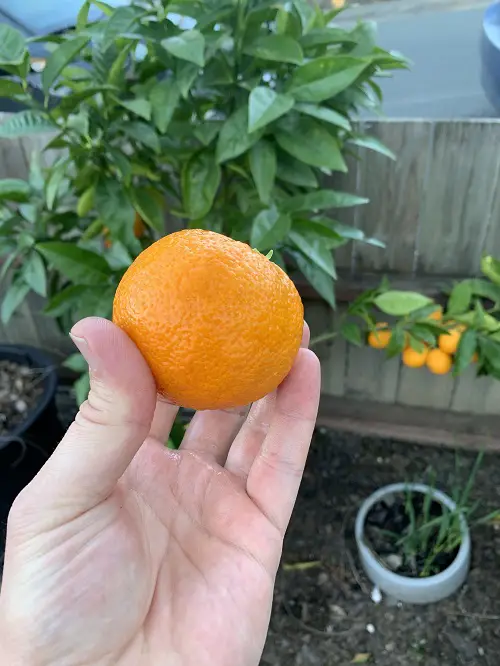You don’t have to own a big garden to enjoy fresh oranges! All you need is a little space for a container!
Growing orange trees in containers is so easy; it will make you think – Why haven’t I tried it before? Don’t worry! You are never too late!
Here are the 10 Best Citrus Trees You Can Grow
Propagating Orange Tree in Pots
You can try growing orange trees in pots using seeds or grafting methods. However, these both can be time-consuming, so it would be a good idea to get a well-grown specimen from a garden center to cut down the wait for tasty fruits!
Ideal Pot Size for Oranges
If you are getting a plant from a garden center, re-pot it into a 1-2 size bigger container than the one it came in – it will be good for a few years.
Orange trees typically need repotting every 2-3 years. When you notice roots growing out of the drainage holes or circling the surface of the soil, that is exactly when you need to repot your tree.
When repotting, choose a container that is about 1-2 size bigger than the old one. This gradual increase supports continued growth without shocking the tree.
Best Orange Tree Varieties for Pots
- Trovita Orange (Citrus × sinensis ‘Trovita’): ‘Trovita’ orange trees are excellent for containers, bearing juicy and sweet oranges perfect for fresh snacks or juicing.
- Calamondin Orange (Citrus x citrofortunella mitis): The ‘Calamondin’ orange is a petite citrus tree that produces small, tangy oranges.
- Dwarf Washington Navel Orange (Citrus × sinensis ‘Washington’): Dwarf Washington is specifically bred for containers, making them a perfect addition to limited-space gardens.
- Dwarf Valencia Orange (Citrus × sinensis ‘Valencia’): This is another dwarf citrus that produces luscious oranges.
- Moro Blood Orange (Citrus × sinensis ‘Moro’): The Moro Blood Orange is known for its deep red flesh and intense flavor.
- Nagpur Orange (Citrus reticulata ‘Nagpur’): The Nagpur Orange, also known as “Santra”, is a popular Indian variety prized for its sweet, juicy flavor and aromatic peel
Requirements for Growing Oranges in Pots
Location
Aim for 6-8 hours of direct sunlight per day, and if you position the container in a south-facing location, it will ensure the most consistent sunlight exposure.
Remember, the more sunlight, the better! Do not keep it in a shaded spot, as it will result in a stubby specimen with fewer or no fruits.
Soil
If you want the best fruits, avoid using 100% garden soil. Go for:
- Two parts high-quality potting mix.
- One part compost to enrich the soil with organic matter and essential nutrients.
- One part perlite, or vermiculite to ensure efficient drainage and aeration.
- Use a handful of fine bark or coir chips for enhanced drainage and moisture retention.
Water
Water when the top inch of soil feels slightly dry to the touch. However, when you see it flowering, make sure the soil is never going too dry.
When it starts to fruit, consistent moisture is crucial to ensure they are juicy and flavorful – avoid daily watering, though.
Temperature
As long as the area is warm and there’s enough sunlight, the plant will be happy, as it doesn’t even mind staying exposed to temperatures as high as 40 C or 104 F!
Ensure to protect it from cold drafts and temperatures below 14 C (58 F).
Orange Tree Care in Pots
Fertilizer
To nourish your container-grown orange tree, use a balanced liquid fertilizer diluted to half its recommended strength once every 3-4 weeks. This will ensure the fruits grow bigger and better.
Adding a handful of fish emulsion or compost every month in the pot will be a great idea!
Pruning
Regularly trim away dead or diseased branches, crossing limbs, and excessive growth to encourage proper air circulation and sunlight penetration.
Pests and Diseases
Look for common pests like aphids, whiteflies, and mealybugs. If spotted, employ a simple solution such as a gentle water spray or neem oil to eliminate these intruders effectively.
As long as the tree gets enough sunlight and air circulation – you don’t have to worry about the diseases much. Just avoid wetting the foliage.
Winter Care Tips for Orange Trees in Pots
Move the potted tree to a sheltered location during severe cold spells to shield it from freezing temperatures and harsh winds—water sparingly and only when the top inch of soil is dry to prevent overwatering and root rot.
Use grow lights to ensure the tree receives sufficient exposure for photosynthesis.
Harvesting Oranges
Oranges reach their ripe stage typically in late winter or early spring (this can vary based on the variety and climate). Simply pick one orange and taste it. The flavor should be sweet and juicy, not sour or bitter.
Use a pair of clean, sharp pruning shears or scissors to harvest fruits. Avoid pulling or tugging, as this may damage the fruit or the tree. Harvest over several days or weeks, as not all oranges on the tree may ripen simultaneously.







Need to know how much lime to use to bring up ph level